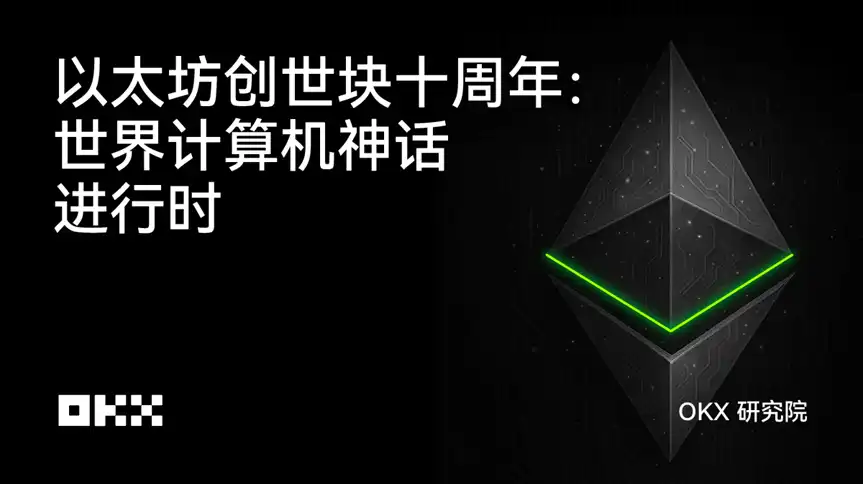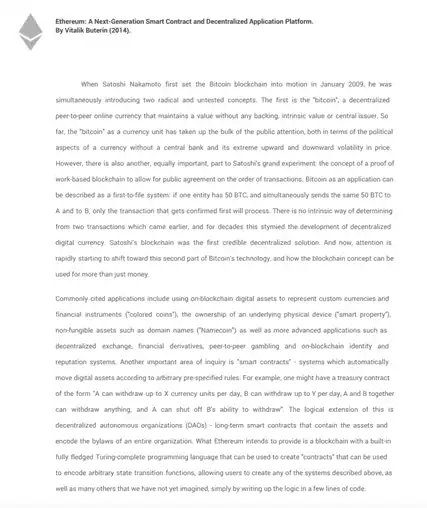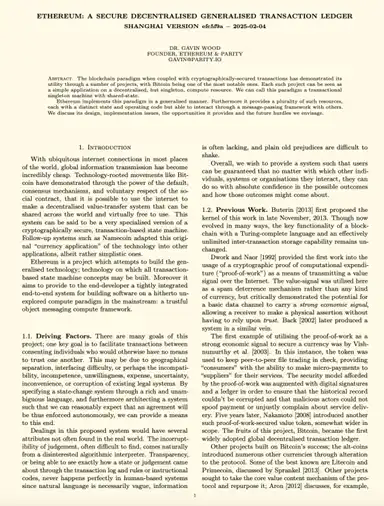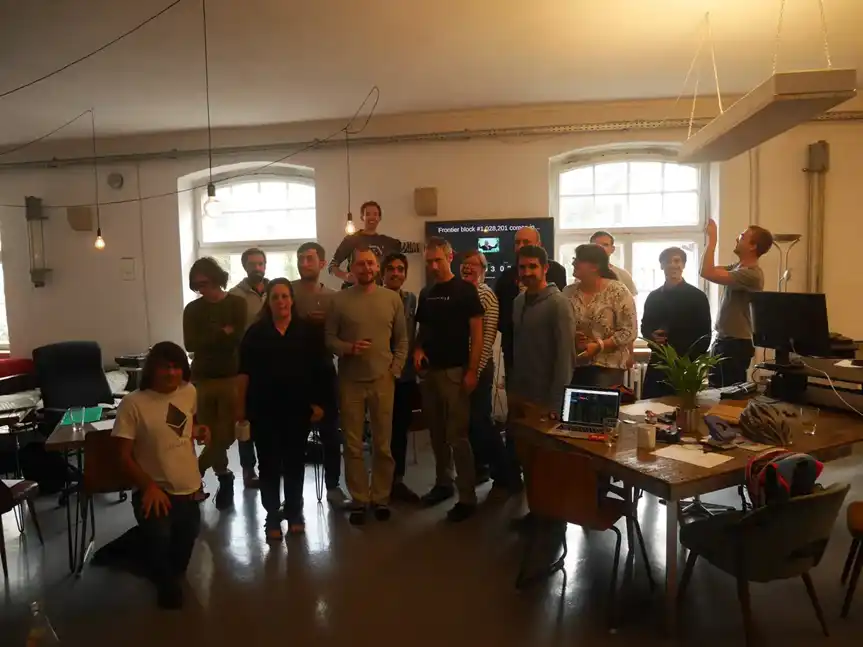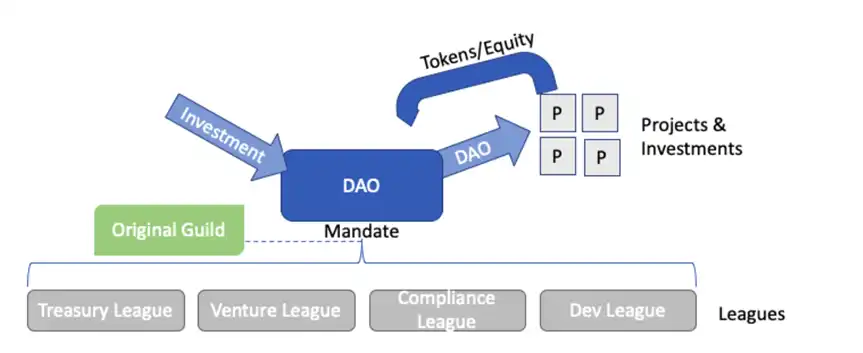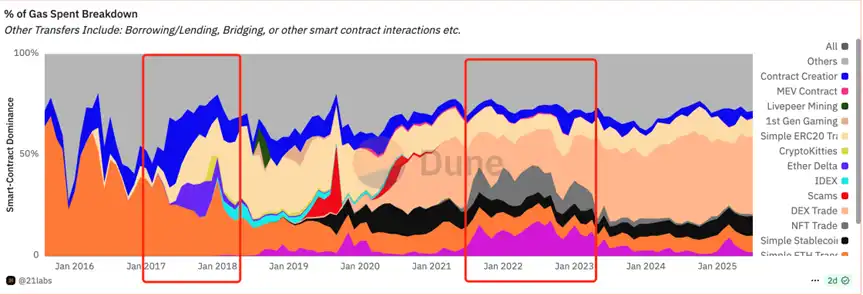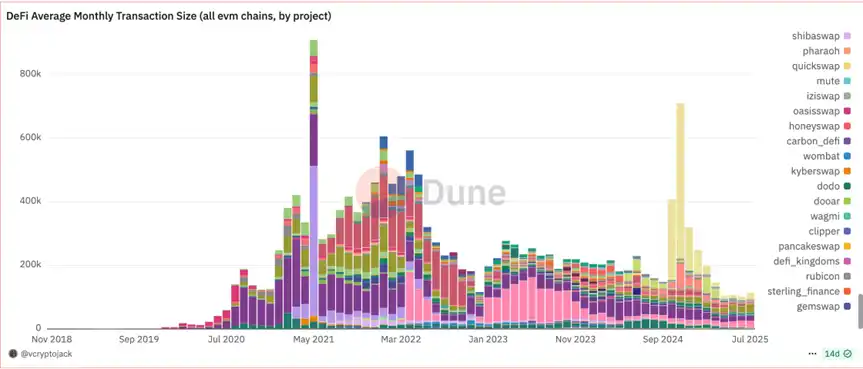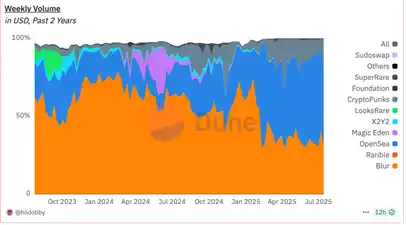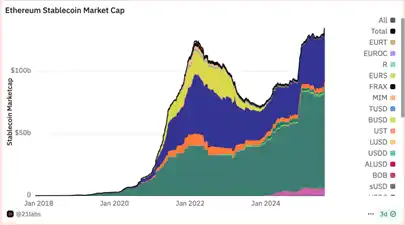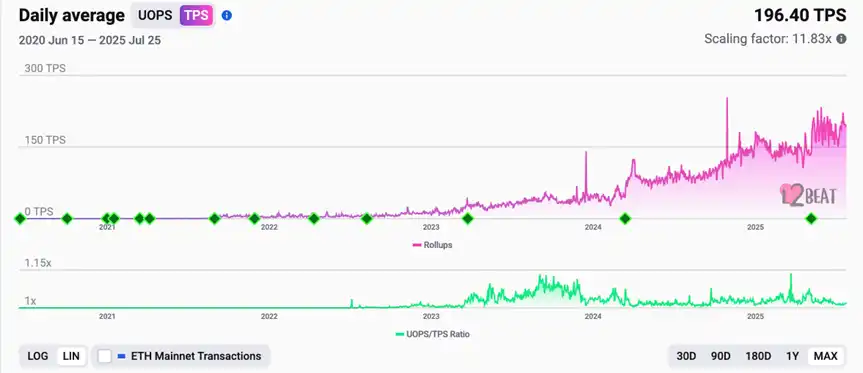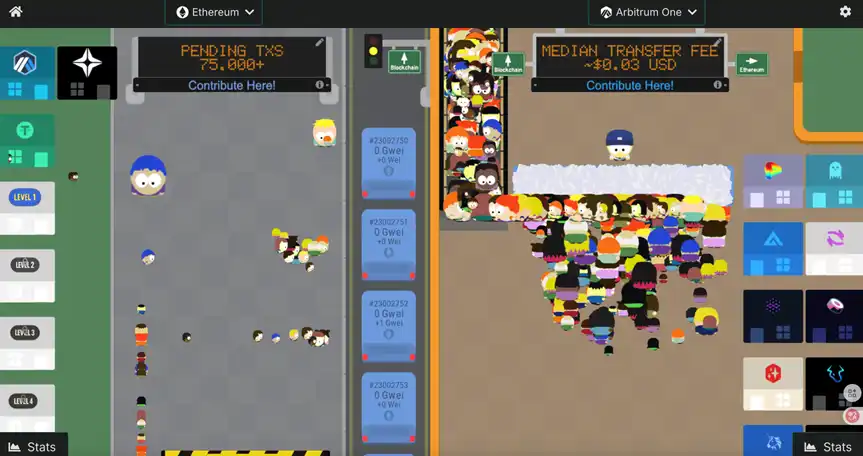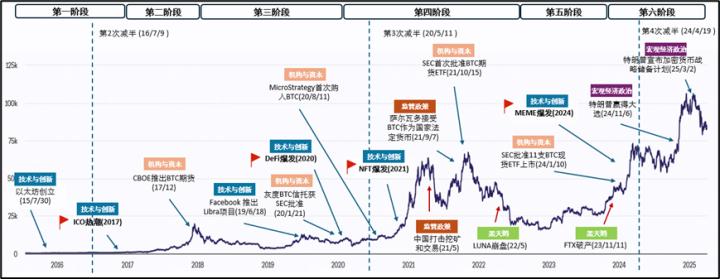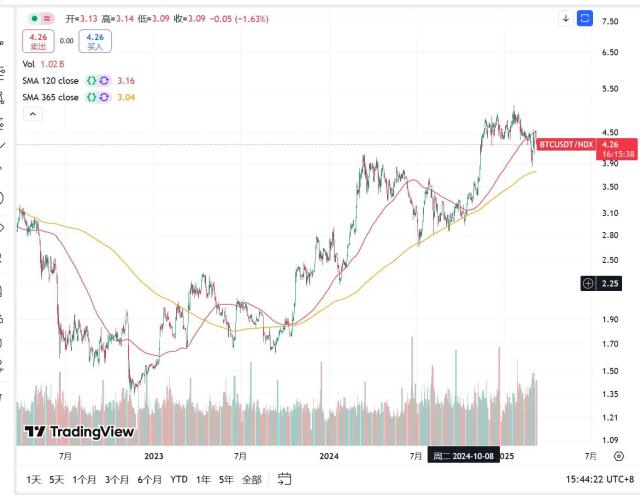Source: OKX Research Institute
Author: @c_luyishisi (Fourteenth Lord)
In 2011, a 17-year-old Russian-Canadian boy initially wrote articles for a website called "Bitcoin Weekly". He was paid 5 bitcoins for each article. "This was my first real job, and the hourly wage was about $1.30," he later recalled.
Those 5 bitcoins are worth $600,000 today - a multi-fold increase that bears witness to the crazy growth of the entire cryptocurrency era.
What is even more shocking is that Ethereum , created by the young Vitalik Buterin , is developing at a speed no less than Bitcoin itself: it now has a market capitalization of more than 400 billion US dollars and carries a transaction volume of more than 5 trillion US dollars per year.
Please follow this article to look back at the ten years since the launch of the Ethereum Genesis Block, which also coincided with the blockchain industry's booming decade. See how it went from the imagination of a young writer earning $1.30 an hour to the infrastructure that changed the operating logic of the entire digital world. In this process, what changes in the technical foundation led to the migration of the superstructure.
Prehistoric Story - Bitcoin is the beginning of a dream
From Bitcoin Inspiration to Ethereum Founder
In 2013, the soaring price of Bitcoin ignited Vitalik's imagination, but it also exposed his own limitations. As a contributor to Bitcoin Magazine , he delved deeper into the Bitcoin community, only to discover how difficult it would be for this revolutionary financial system to shift to a new goal of programmability and expand the blockchain ecosystem beyond simple financial products.
Moreover, in the blockchain world at that time, smart contracts were just an extremely vague concept, with no definition, no samples, and no direction.
Initially, contracts supported only fixed-function scripts—for example, simple multi-signature and time-locked contracts, or two-party contracts like Mastercoin, where participants A and B each invested capital and then distributed the proceeds according to a pre-set formula. This scripting language was far from Turing-complete, merely describing the terms of a relationship between two parties. It was far from a true " world computer ," let alone intelligence.
Vitalik once argued to Bitcoin Core developers that the platform should have a more comprehensive programming language for developers. However, the Bitcoin community's conservative and minimalist philosophy fundamentally conflicted with Vitalik's vision of a more universal and open blockchain. Furthermore, various scaling solutions on the market were still patchwork, with no one daring to propose a completely redesigned solution.
So he made a decision that now seems to have changed the world: to develop a new platform.
The decision to move forward has been made, but the situation to move backward is not clear. Although it is a new platform, how to design and implement it specifically is a big problem.
A turning point came in late 2013, while Vitalik was taking a long walk in San Francisco. He suddenly realized that contracts could be generalized—if they were smart contracts, they could themselves be fully fledged accounts, capable of holding, sending, and receiving assets, and even maintaining and storing some state permanently. So why not go a step further and break the script that describes fixed relationships and design a virtual machine capable of executing arbitrary computations?
The original Ethereum design even adopted a register-based architecture (rather than the stack-based architecture that later emerged) and incorporated a novel fee mechanism: the contract's balance would decrease with each computational step, and execution would cease if the contract ran out of funds. This was the early prototype of the "contract pays" model, which later evolved into the "sender pays" and gas systems we are familiar with.
At the end of 2013, Vitalik wrote the Ethereum white paper, the core of which was to define the goal - to create a general decentralized computing platform on which anyone can deploy and run decentralized applications, not fixed-function scripts, but a truly Turing-complete computing environment.
However, there was still a huge gap to bridge between the ideal vision and achievable technical specifications. The arrival of Gavin Wood was a crucial turning point. In 2014, Gavin Wood authored the famous "Ethereum Yellow Paper," the formal technical specification for the Ethereum Virtual Machine's operational processes.
https://ethereum.org/content/whitepaper/whitepaper-pdf/Ethereum_Whitepaper_-_Buterin_2014.pdf
https://ethereum.github.io/yellowpaper/paper.pdf
The white paper outlines the "why" and "what," while the yellow paper precisely defines the "how." Together, these two documents have taken Ethereum from concept to reality.
Key technology decisions and evolutions in Berlin
From 2014 to 2015, Berlin became a spiritual mecca for Ethereum. Vitalik frequently made pilgrimages to Berlin's Bitcoin Kiez district, and the Room 77 bar and restaurant became a gathering place for the early crypto community. Just 1.5 kilometers from Room 77, in the offices at Waldemarstraße 37A, the Ethereum core team toiled through the night, coding.
During this period, the Ethereum protocol has undergone countless technical iterations: from a register-based architecture to a stack-based architecture, from a "contract pays" model to a "sender pays" gas system, and from asynchronous internal transaction calls to synchronous execution. Many decisions have far-reaching consequences.
For example, the EVM (Ethereum Virtual Machine) standardized on a 256-bit integer model, initially designed to accommodate the common bit widths of hash functions and encryption algorithms and to mitigate overflow risks. While this approach seemed overly conservative at the time, it naturally accommodated the complex, high-precision mathematical operations found in DeFi (such as fixed-point operations, multiplication and division, and rounding), while also avoiding the precision issues inherent in JavaScript and float-based languages.
Furthermore, if a transaction runs out of gas, the entire execution is rolled back rather than partially completed. This design eliminates the entire attack surface of "partial execution attacks" and has become the cornerstone of the security of all subsequent smart contracts. This design is also driven by economic factors. On the one hand, technically, it is impossible to predict the gas required for contract execution before execution. On the other hand, because of the possibility of failure and loss, senders are more incentivized to control costs and behavior, avoiding blindly sending transactions.
Everyone's technical creativity has brought many unexpected surprises. For example, Vitalik initially envisioned an asynchronous contract call model, but Gavin Wood naturally adopted synchronous calls during implementation, based on engineering and semantic consistency considerations. This seemingly unintentional deviation laid the key technical foundation for the subsequent composability of DeFi—enabling one contract to synchronously return execution results when calling another, creating the predictability and atomicity of "money legos."
It should be noted that Ethereum Defi applications are highly interdependent and none of them are a single ecosystem. For example, lending protocols use DAI/USDC as collateral, and the stablecoin mint module calls Chainlink as an oracle. Many market-making protocols provide leverage based on Aave and Compound. In this series of linkages, synchronous calls are indispensable, but they have both advantages and disadvantages. Because the performance expansion of synchronous calls is more difficult, Ethereum will have to choose more complex expansion ideas in the future (see the L2 section below for details).
Furthermore, the well-known Proof-of-Work (PoW) mining algorithm has undergone multiple iterations, from Vitalik's Dagger algorithm, to Dagger-Hashimoto, a collaboration with Thaddeus Dryja, and finally to Ethash, which emphasizes ASIC resistance. Throughout this process, various approaches have been explored, including adaptive difficulty, memory-hard structures, and random access circuits.
Of course, some of these difficulties have unexpected benefits, but they also naturally become subsequent technical debt. In 2025, when Vitalik proposed replacing the EVM with RISC-V, he admitted: "Ethereum has often failed to maintain simplicity throughout its history (sometimes due to my own decisions), which has led to excessive development costs and various security risks, often in pursuit of benefits that have proven to be illusory."
A historic moment: July 30, 2015
Vitalik still remembers the scene in his Berlin office on July 30, 2015: “A lot of developers gathered together, and we were all watching the block count on the Ethereum testnet reach 1028201, because that marked the automatic launch of the Ethereum mainnet. I still remember that we all sat there waiting, and then it finally reached that number, and about half a minute later, the generation of Ethereum blocks began.”
At that moment, Ethereum had fewer than 100 developers, and the entire ecosystem was little more than a technological experiment. The first decentralized Twitter app, EtherTweet, had an interface as rudimentary as the Wright Brothers' airplane, and every tweet required exorbitant on-chain fees. Smart contracts were still the playthings of a few geeks, while DeFi, NFTs, and Layer 2 existed only in the imaginations of white papers.
If you search for that address on Google Maps now, you can still see the label "Ethereum Network Launch (30/07/2015)" and a group photo of the early core members of Ethereum at that time - that is one of the most important photos in the history of encryption.
On July 30, 2025, when Ethereum celebrates its tenth anniversary, by the first half of 2025:
In Q1 2025, a record 6.1 million wallets participated in on-chain governance voting.
Ethereum is adding around 350,000 new wallets per week, driven by users joining via Layer 2s.
As of March 2025, the number of active Ethereum wallets reached 127 million, a year-on-year increase of 22%.
It leads the stablecoin market with a market capitalization of $82.1 billion, accounting for 60.0% of the total market capitalization.
The TVL (total locked value) of various DeFi protocols exceeds $45 billion.
Uniswap ’s daily trading volume exceeds $2.1 billion, and lending platforms such as Aave and Compound hold a total of over $13 billion in locked assets.
Over the past 12 months, Ethereum has recorded over 28,400 GitHub commits in the core repository.
The number of active developers contributing to Ethereum-related projects currently stands at over 5,200.
There are many more data that I will not list here. What I want to express here is that this "edge experiment" that once had less than 100 developers participating has grown into the largest development platform and ecosystem in the Web3 world.
Over the past decade, the industry has grown from a handful of daily transactions to processing $5 trillion in value annually, from exorbitant fees of several dollars per transaction to meager costs of less than a cent on Layer 2, from PoW mining, which consumes as much electricity as a small country, to PoS, which consumes less than a building, and from the humble EtherTweet demo app to a mature DeFi ecosystem where 80% of transactions are denominated in ETH—each of these figures bears the weight of the tireless efforts of countless developers and the trust and confidence of users. When the US SEC approved nine ETH spot ETFs, with first-day trading volume exceeding $1 billion, this once-fringe cryptocurrency experiment has become one of the world's largest assets, exerting an increasingly profound influence at the core of the mainstream financial system.
However, the journey from a young man in a Berlin office to the creator of a new generation of global financial infrastructure has not been smooth. Over the past decade, Ethereum has endured the pain of technological upgrades, the trials of hacker attacks, the baptism of market cycles, and countless critical decisions that hinged on its survival. Every crisis was a reinvention, every upgrade a metamorphosis, and every controversy a growth. It is these pivotal moments of ups and downs that have shaped the Ethereum we know today.
Let us return to those decisive moments and re-examine how this legend was forged in the wind and rain.
Ten-year journey: key nodes and evolutionary logic
2015-2017: From Genesis to Hard Forks and ICO Frenzy
The summer when the Ethereum mainnet launched marked the beginning of the smart contract era.
In its early days, Ethereum was more of an experimental technology showcase than a truly usable product. Most of the applications running on the network were simple demo applications—like EtherTweet (a decentralized Twitter clone), WeiFund (a crowdfunding platform), and various rudimentary voting contracts.
Unstable gas prices make every interaction a gamble, sometimes leaving transactions unavailable for an hour. Even more frustrating for developers is the immaturity of the Solidity language, with the compiler frequently encountering strange bugs (such as variable shadowing, stack overflows, and incorrect jump logic). The security of smart contracts often relies on the developer's personal experience.
Despite the technological immaturity, the Ethereum community has demonstrated unprecedented idealistic enthusiasm. Weekly developer meetings are always packed with programmers from around the world, discussing how smart contracts can reshape the world—from autonomous organizations to prediction markets, from identity systems to supply chain management—and it seems that everything is truly flourishing. This optimism is laced with an almost unwavering belief: code is law, mathematics is truth, and decentralization is freedom.
With this sentiment in mind, in May 2016, a project called "TheDAO " launched on Ethereum. Hailed as "the largest crowdfunding experiment in human history," it raised $150 million worth of ETH (14%–15% of the entire network) in just 28 days, becoming the world's largest venture capital fund at the time.
Image source: The Dao White Paper: https://github.com/the-dao/whitepaper
Then, a massive crisis quietly loomed. On June 17th, a hacker exploited a reentrancy attack vulnerability in The DAO’s smart contract and successfully stole 3.6 million ETH (approximately 5% of Ethereum’s total supply at the time).
The core of this attack lies in the fact that the splitDAO function in The DAO smart contract has a typical reentrancy vulnerability - a classic attack mode that was later written into smart contract security textbooks.
When a user calls the splitDAO function, the contract executes the following steps: first, the reward is sent to the user via the withdrawRewardFor function, and then the user's balance is updated. The problem is that the withdrawRewardFor function ultimately uses the call.value() method, which uses the underlying call() method to send ETH to the recipient (the use of such a low-level transfer mechanism is also a problem). Then, when the recipient (attacker) contract receives the ETH, its fallback function is triggered, and the splitDAO function is immediately called again. This creates a reentrancy attack. Because the first call has not yet completed (the balance has not yet been updated), the attacker can repeatedly withdraw funds based on the same balance.
The attacker deployed two identical malicious contracts, using recursive calls to execute up to 29 repeated withdrawals. Each withdrawal was calculated based on the same original balance, ultimately successfully transferring tens of millions of dollars in ETH to a child DAO controlled by them. Ironically, this vulnerability had been discovered and warned by multiple developers before the attack, but due to the belief that "code is law," no one considered suspending the contract's execution.
This has plunged the entire Ethereum community into an unprecedented philosophical crisis. On one side are technical purists who insist that the blockchain's immutability is sacrosanct, arguing that the attack, while morally wrong, is technically "legal" because the attacker was simply acting according to the contract's code logic. On the other side are pragmatists who believe that protecting investor interests and maintaining the Ethereum ecosystem are more important than abstract principles.
In contrast, Gavin Wood (co-founder, former CTO, and author of the Yellow Paper) responded in a public interview: "Blockchains are supposed to be tamper-proof, and the code on the chain should be the actual control logic." However, he also admitted: "If I saw someone being robbed on the street, I would stand up and stop the robbery and return the stolen goods."
Vitalik Buterin later wrote in his blog: "I stayed up all night thinking over and over again about what true decentralization is. If we can modify history at will, what is the difference between Ethereum and traditional databases? But if we watch the attacker take away the community's funds, how can we face those who trusted us?"
After a heated community debate, Vitalik ultimately opted for a hard fork (a story that exemplifies the split between Ethereum and Ethereum Classic). He later reflected, "We learned a harsh truth: absolute decentralization is a beautiful ideal, but in the real world, we must balance pure principles with human needs." This lesson has been reflected in every subsequent network upgrade: technical decisions must serve the overall interests of the community, not abstract ideologies.
If the DAO incident was Ethereum's coming-of-age ceremony, then the ICO boom in 2017 was its adolescence. That year, more than 50,000 ERC-20 token contracts were deployed on the Ethereum network, raising more than $4 billion. Blockchain began to rewrite the rules of the game for traditional venture capital.
Image source: dune: https://dune.com/queries/2391035/3922140
Historical data shows that, using gas consumption as an analysis, a large number of contracts were generated in 2017-2018 (the yellow part in the red box on the left side of the figure), and ERC20 transfers also became popular. The type of on-chain assets has transformed from the native currency (ETH) to a variety of ecological applications.
There is also a digital cat game called CryptoKitties , which occupied 15% of the network's transaction capacity in just a few days, causing gas fees to soar from a few cents to tens of dollars, and transaction confirmation time to be extended from minutes to hours. It was precisely this precedent that allowed the second phase of the cat NFT craze (the gray part in the red box on the right side of the picture) to remain calm after the London upgrade completed in 2021.
The ecological explosion in each cycle has continuously increased the demand for on-chain space, and people have also deeply realized how far away the processing capacity of 15 transactions per second is from the grand vision of "global computer".
2018-2022: Forging the Future in Silence—From Technological Accumulation to Ecological Explosion
Ongoing Technological Revolution (2018-2022)
When the ICO bubble burst in 2018 and speculators fled, the number of Ethereum developers continued to grow. It was during this period of silence, largely forgotten by the outside world, that Ethereum completed a series of key technological upgrades, laying a solid foundation for its subsequent ecosystem explosion.
Upgrades are carried out almost annually, with the Byzantium fork, the Constantinople fork, and the Istanbul fork all appearing one after another. Many of these changes are largely invisible to users, bringing more fundamental changes. By reducing the block reward from 5 ETH to 3 ETH, Ethereum has begun to strike a balance between inflation and security. These upgrades have also introduced various underlying support capabilities for Layer 2 expansion, including pre-programmed zero-knowledge proof technologies like zk-SNARKs. Furthermore, the introduction of the CREATE2 opcode enables deterministic address creation in multi-chain contracts.
As mentioned above, the solution that truly alleviates the perceived transaction congestion problem for users is EIP-1559, part of the 2021 London upgrade. This proposal addresses the shortcomings of the traditional "blind auction" mechanism through a dual mechanism of base and priority fees. Before EIP-1559, users had to guess the appropriate gas price. Bidding too low could result in transactions being blocked for a long time, while bidding too high would waste a significant amount of money. Even worse, when the network is congested, users often panic and drastically increase their bids, causing fees to spiral upwards and creating a "price war."
But it does not mean that there will be no more congestion after EIP-1559, because EIP-1559 solves the "price discovery" problem rather than the "capacity" problem.
The actual throughput of the Ethereum mainnet hasn't increased significantly as a result—it still only processes about 15 transactions per second. He simply made prices more predictable by automatically increasing the base fee during periods of congestion, until some users stopped using it due to the high prices. It's like building a better toll booth—making queues more orderly and tolls more transparent—but without increasing the number of lanes on the highway itself.
Real "road expansion" still needs to rely on Layer 2 solutions - this is why rollup technologies such as Arbitrum and Optimism, as well as blob of eip-4844, have become the core of Ethereum's expansion roadmap.
During this period, there was also a fundamental technological change: the evolution of Ethereum's consensus mechanism. Initially, Ethereum inherited Bitcoin's PoW model, but the PoS solution, which began to be explored in 2015, went through repeated demonstrations of various technical routes such as Casper FFG and Casper CBC, and the direction was finally determined until the successful launch of the beacon chain.
On December 1, 2020, 520,000 ETH were pledged in just one month. By the successful launch of The Merge in 2022, Ethereum's energy consumption was reduced by 99.95%, which not only met the environmental protection requirements of regulators and investment institutions, but also laid the foundation for future sharding expansion and further optimization of the beacon chain, truly realizing the transition from "mining is security" to "staking is governance."
Source: Ethereum staking data: https://dune.com/hildobby/eth2-staking
To date, Ethereum has over 1.1 million validators and 3.6 million ETH locked in staking, representing approximately 29.17% of the total supply. This massive staking participation provides Ethereum with unprecedented economic security—the cost of a 51% attack would be in the millions of ETH, making it extremely costly. Furthermore, the diverse nature of the staking community makes the overall security even more difficult to compromise.
However, consensus does not have to remain static over the long term. Ethereum’s successful transition to POS without sacrificing decentralization is largely due to the fact that it has been running POW for many years, resulting in a highly dispersed token distribution. This inherent advantage is not available on any POS chain. Furthermore, the existing consensus still brings limitations to user experience.
For example, Ethereum currently uses a delayed finality mechanism, requiring multiple epochs of confirmation to determine block finality. This is inconvenient in cross-chain and rollup settlement scenarios. Therefore, the Single Slot Finality (SSF) solution is being developed to compress finality into a single slot (12 seconds). There's also the idea of Beam Chain, which offers several potential directions for future consensus design. For example, it allows validators to participate in consensus without owning the full state, enhancing the feasibility of lightweight clients. Combined with designs like EIP-4844 and Danksharding, the Beam model can support more flexible data access paths and accelerate the decoupling of validators and executors.
Therefore, the path to consensus remains timeless, constantly adapting to higher-level decentralization requirements and matching user experience.
The DeFi/NFT Summer Ecological Miracle (2020-2023)
After years of infrastructure upgrades, when the technological foundation is solid enough, innovation will emerge like mushrooms after rain.
In the summer of 2020, Compound's liquidity mining sparked the DeFi revolution. However, what truly made this revolution possible was the technological foundation built over the previous three years. Uniswap's automated market maker model, Aave's flash loan, and Curve's optimized stablecoin trading—each innovation was built on Ethereum's increasingly mature smart contract infrastructure. Furthermore, Ethereum's leading DeFi protocols are highly interdependent, forming a true "money Lego" ecosystem. This composability is the result of Ethereum's years of technological accumulation.
Image source: dune: https://dune.com/queries/4688388/7800121
This chart shows the transaction trends of Defi applications on various EVM architecture chains. Although some EVMs are not Ethereum and its L2 ecosystem, it can be seen from this that from the most disruptive period in 2021, when several major players competed for supremacy, to now, it is no longer clear how many colors (projects) there are on each chain, each of which is flourishing to meet the diverse financial needs of different chains.
On the other hand, from CryptoPunks to Bored Ape Yacht Club, NFTs have not only redefined digital ownership but also enabled Ethereum to find new value in digital art and culture. The rise of OpenSea and Blur demonstrates Ethereum's immense potential as a cultural infrastructure, all underpinned by its robust token standards system.
It's worth noting that even today, the CryptoPunks project (shown in gray on the left side of the image below) still holds a significant share of the entire NFT market. It even predates the NFT standard, with its contracts already incorporating trading market functionality. Its full-chain architecture allows for direct on-chain transactions without requiring a front-end.
Image source: dune: https://dune.com/queries/2704953/4502619
Image source: dune: https://dune.com/queries/2452131/4030703
In terms of stablecoins, after the Defi Summer in 2021, the scale of funds exceeded 130B, divided among USDC, USDT, DAI, etc.
Looking back over the past decade, from the initial ERC-20 to ERC-721, ERC-1155, and then to emerging standards such as ERC-3525 and ERC-3475 that are being explored, Ethereum has built a digital framework that can express almost all types of assets in the real world.
These five standards constitute a complete expression system from simple currency to complex financial contracts. There are many more standards that have not yet been finalized but have been gradually enabled in different applications, and there will be room for continued development.
This is also the source of innovation. A market built on a more open protocol layer will have more room for ingenuity to play out. With the help of EIP (Ethereum Improvement Proposal), it does not create products itself, but is a set of Ethereum improvement proposal mechanisms that allow protocol participants to reach consensus at different levels, whether it is contract standards, client implementation, or process optimization related to user experience, so that every improvement suggestion can be recorded in history, technically reviewed, and ultimately adopted or rejected by the network.
2023-2025: Differentiation in the Rollup Centric Era
Ethereum's Path to Scaling: Layer 2
This journey has come a long way. Layer 2 has become a vital component of the Ethereum ecosystem, accounting for 85% of all transactions and 31% of transaction volume, with the number of active addresses reaching three to four times that of the Ethereum mainnet. Behind this booming expansion lies a more complex process of comprehensive restructuring of both technology and business models.
As mentioned earlier, Ethereum’s TPS was 15/s before. So what is the actual TPS of the entire Ethereum ecosystem now?
Image source | L2beat: https://l2beat.com/scaling/activity
Vitalik once did a comprehensive calculation using Blobs: using EIP-4844, we now have 3 blobs per slot, with a data bandwidth of 384 kB per slot, which is 32 kB per second. Each transaction requires about 150 bytes on the chain, so we get ~210 tx/sec.
Compared with the actual numbers on L2beat, they are quite similar. A more than ten-fold improvement in just a few years is indeed very powerful.
How do we understand the EIP-4844 Blob here? There is an interesting website that can help you understand the difference.
Image source: TxCity: https://txcity.io/v/eth-arbi
First, let's look at the left side, which shows Ethereum's block generation process. Each person in the picture is a transaction that interacts with a certain application. Then, based on the gas price, it enters different blocks and is packaged and sent out.
Then, let's look at the right side, which is Arbitrum One, one of Ethereum's Layer 2. Similarly, in the picture, each person who interacts with a certain application will leave a note on the counter for this transaction. After a certain period of time, a postman will come to collect all the transactions as a whole, forming the current blob. Then this postman will go to the Ethereum mainnet on the left to submit it and enter a certain carriage.
In this way, Blob avoids writing unnecessary data to the Ethereum mainnet for a long time, and only plays a role in verification and for a period of time, thus reducing the transaction fees on Layer2 by 90%.
Image source: L2beat: https://l2beat.com/scaling/costs
However, objectively speaking, market opinions on this are mixed, as L2 has not brought a proportional increase in Ethereum's revenue. EIP-1559 once introduced a mechanism for achieving deflation through burning ETH, which was cheered by the community, as deflation often represents an increase in the value of vested groups.
But today, with 85% of transactions transferred to L2, MEV income is naturally intercepted by rollups at various layers, and the mainnet has fallen into inflation again. Inflation itself will actually affect the security of Ethereum staking (currencies that depreciate over the long term naturally tend to be held for the long term).
But in my opinion, Ethereum has voluntarily given up profits in exchange for ecological prosperity. It has not adopted the traditional "enterprise" approach of maintaining profits by raising fees or restricting competition. Instead, it has chosen to make concessions and reposition itself as a highly decentralized, permissionless L2 issuance protocol.
This strategy has led to a collision of multiple perspectives. Regardless, it can be said that what we are witnessing now is a new value capture model - ETH no longer relies on a burning mechanism to control supply to simply obtain value, but instead obtains value assessment in an ever-expanding ecosystem through powerful network effects.
Furthermore, compared to earlier scaling roadmaps, we are now shifting from the early vision of "homogeneous sharding" to the reality of a "heterogeneous ecosystem." The 2016 sharding vision envisioned the creation of multiple identical copies of the EVM, processed by different nodes. Today's L2 effectively realizes this vision, but with a fundamental difference: each "shard" is created by different participants and adheres to different standards, forming a de facto heterogeneous network.
The traditional "single-chain governance" model has given way to a "multi-chain federation," where each L2 has its own governance mechanism, economic model, and community culture. Base can focus on providing a seamless experience for Coinbase users, while Arbitrum can pursue maximum EVM compatibility, not to mention unique experiences like ZkEVM. This kind of diversity is impossible to achieve within a single-chain architecture.
However, this heterogeneity also presents new challenges. How can we make using Ethereum feel like using a single ecosystem, rather than 34 different blockchains? However, this is a more complex coordination challenge than The Merge, as it involves more participants, more dispersed interests, and a more pressing timeframe.
This L2 exploration is still ongoing, but no matter what the outcome, Ethereum’s “self-sacrifice” has become one of the most unique experiments in the history of blockchain—a technical system that voluntarily cedes power for its own ideals, and a protocol that gives up monopoly profits for the diversity of the ecosystem.
This is perhaps the best reflection of what Vitalik said: "The technical project and the social project are inherently intertwined."
2015-2025: A decade-long journey towards account abstraction
The vision of account abstraction is even older than Ethereum itself. It’s a dream of “making technology invisible”—just as we don’t need to understand the underlying Unix system to use our iPhones today, blockchain users shouldn’t be forced to become cryptography experts.
Imagine this scenario: you need to memorize a string of 12 random words to open your bank account. If you forget, your deposits will be permanently lost, and if you leak them, all your assets will be stolen. This sounds like a bug from a science fiction novel, but it's the real experience of blockchain users for the past decade.
This seemingly "pure" autonomy design actually stems from a technical compromise in Ethereum's early days: the EOA (External Account) system coupled ownership and signing rights to the same private key. To put it more bluntly, your "ID card" also doubles as your "bank password." Exposing your private key means exposing everything.
The root of this design comes from Ethereum's transaction structure - there is no "From" field in standard transactions, but the sender's address is reverse-parsed through the VRS parameter (i.e. user signature).
Account abstraction aims to solve the problem of "technical necessity" restricting user experience.
In November 2015, just four months after the Ethereum mainnet launched, Vitalik proposed EIP-101, the first account abstraction proposal. The idea at the time was radical yet simple: turn all accounts into smart contracts, making code, not private keys, the sole controller of accounts.
But ideals are often ambitious, but reality is often harsh. Ethereum carries a heavier historical burden than any new blockchain—millions of existing EOA accounts, hundreds of billions of dollars in assets, and a vast and complex ecosystem. Any radical change could have disastrous consequences. Thus began a long technical journey:
EIP-101 in 2015 envisioned a blueprint for contractual accounts;
EIP-859 in 2018 attempted to implement contract wallets at deployment time;
· EIP-3074 in 2021 attempted to add smart contract functionality to EOA;
ERC-4337, proposed in 2021 and launched in 2023, will enable account abstraction without changing the protocol layer.
EIP-7702, based on EIP-3074, will be proposed in 2024, ultimately achieving mainnet deployment in the Pectra upgrade in 2025.
This decade of exploration has been like changing the engine of a mid-flight aircraft—every step must be taken with extreme caution, ensuring both safety and upgradeability. EIP-7702 not only changes the technical architecture but also lays the foundation for an enhanced user experience. Let's look ahead to the future:
Passkey technology: You no longer need to remember 12 seed phrase, you can securely access your digital assets using just Touch ID or Face ID.
Gmail Retrieval: If you forget how to access your wallet, you can use ZK Email technology to send a zero-knowledge proof to your Gmail, restoring control of your wallet without leaking any privacy. It sounds like magic, but it is real technology.
One-click complex DeFi operations: For heavy on-chain users, multiple transactions can be bundled together for execution—from lending to trading to staking, a complex sequence of operations can be completed with a single click, significantly reducing wait time and the risk of failure. Of course, this requires a reliable wallet to structure these transactions for you.
Looking back at the Pectra upgrade, we once again see Ethereum's continued focus and perseverance on its future direction. The L2 strategy has entered a period of stable execution. While Ethereum's roadmap has evolved in some details, its core goal remains consistent: building a secure, decentralized, highly scalable, and easily verifiable green blockchain. The introduction of various user experience proposals represents Ethereum's unwavering pursuit of enhancing its competitiveness while maintaining decentralization. Even in the face of fierce competition from a slew of new-generation public blockchains, it remains committed to becoming the ideal world computer.
Stars and Oceans: Moving Toward Openness and Fairness
On July 30, 2024, on the ninth anniversary of Ethereum, Vitalik raised a profound question of the times at EDCON: "The past ten years of Ethereum have been a decade of our focus on theory, and by 2024, we have the technology. In the next 10 years, we really have to change our focus and think not only about L1, but also about what impact we actually have on the world."
Ten years ago, a 19-year-old boy was writing code with his teammates in a Berlin office, dreaming of creating a "world computer." Ten years later, his dream has been partially realized: Ethereum now carries trillions of dollars in value, connects tens of millions of users worldwide, and supports an unprecedented decentralized financial ecosystem.
However, like all great innovations, Ethereum’s story is far from over. From the trauma of the DAO Hack to the revelry of DeFi Summer, from the triumph of The Merge to the divergence of Layer 2, to the ups and downs of its decade-long journey toward account abstraction, every crisis marks the beginning of a new life, and every controversy drives the process of evolution.
Ten years have passed, and Ethereum is still the unfinished world computer, a myth that is still in progress. In the early days, he had nothing and gave up the efficiency thinking, allowing Ethereum to run as a protocol and become a resilient system.
It carries humanity's collective imagination of a more open, fairer, and more autonomous digital future, and this, perhaps, is its greatest value.


